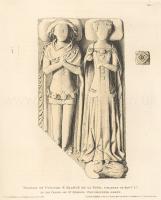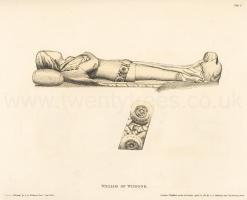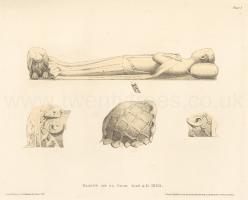Text this colour links to Pages. Text this colour links to Family Trees. Text this colour are links that are disabled for Guests.
Place the mouse over images to see a larger image. Click on paintings to see the painter's Biography Page. Mouse over links for a preview. Move the mouse off the painting or link to close the popup.
All About History Books
The Chronicle of Walter of Guisborough, a canon regular of the Augustinian Guisborough Priory, Yorkshire, formerly known as The Chronicle of Walter of Hemingburgh, describes the period from 1066 to 1346. Before 1274 the Chronicle is based on other works. Thereafter, the Chronicle is original, and a remarkable source for the events of the time. This book provides a translation of the Chronicle from that date. The Latin source for our translation is the 1849 work edited by Hans Claude Hamilton. Hamilton, in his preface, says: "In the present work we behold perhaps one of the finest samples of our early chronicles, both as regards the value of the events recorded, and the correctness with which they are detailed; Nor will the pleasing style of composition be lightly passed over by those capable of seeing reflected from it the tokens of a vigorous and cultivated mind, and a favourable specimen of the learning and taste of the age in which it was framed." Available at Amazon in eBook and Paperback.
Effigy of William of Windsor and Blanche de la Tour is in Monumental Effigies of Great Britain.
EDWARD gave another of his sons by Philippa the name of William, who died so young that nothing more is known of him than the place of his birth, as affixed to his name, and that he was buried at Westminster, in the chapel of St. Edmund [Map], in the abbey church. In the same tomb are also deposited the remains of Blanch de la Tour, their third daughter, so called from her birthplace, the Tower of London [Map]. She was born and died in 1340. Their effigies in alabaster, scarcely eighteen inches in length, are placed on an altar-tomb. Sandford says that an inscription on brass, which had been affixed on the monument, was not extant in his time. The costume of the male figure much resembles that of William of Hatfield. The cote hardie of the female, flanches, jewelled stomacher, girdle, cordon and clasps of the mantle, are worthy attention.
Details. Plate 1. One of the fermails of the Princess's mantle. Plate II. Ornaments on the Prince's girdle. Plate III. Details of the Princess's circlet and reticulated head-dress.


